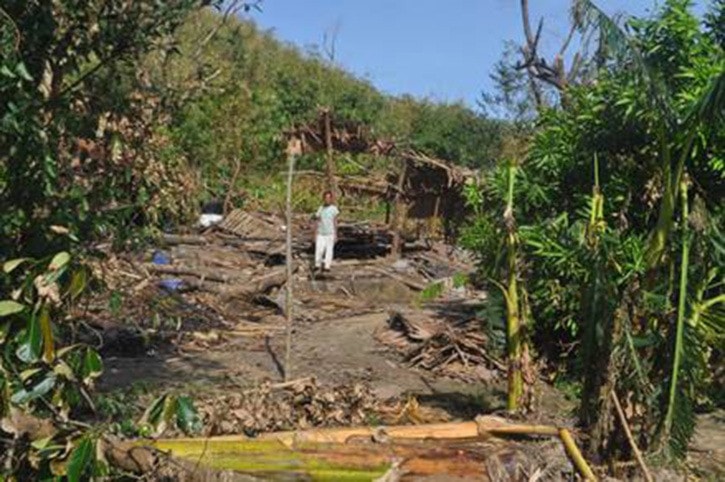It was unlike anything Ed and Ruth Wiebe had ever experienced in their years in the Philippines. Typhoon Haiyan’s 200 to 300 kilometre per hour winds tore through the small village of Ocam Ocam on the island of Busuanga, ripping roofs from houses and bending trees over until they broke. The devastation to the small town of roughly 200 was huge, driving people to flee together from house to house as roofs were stripped away, leaving them vulnerable to the elements. It was only when it was all over that the full extent of the damage could be seen. And although the Wiebes had weathered their share of typhoons, this level of destruction was something completely new.
Ed and Ruth Wiebe began working in the Philippines ten years ago when they came to the island with the pastor of their church and his wife who is originally from Ocam Ocam. Seeing a need for a school in the town where more than half the population are children, the Wiebes decided to build a school, which now teaches kids from kindergarten to grade fou. With sponsor funds, they have been able to build the school as well as hire three teachers. To encourage parents to send their kids to the school rather than help work in the fields, sponsorship money also provides each family with a bag of rice.
Dan Wiebe, Ed and Ruth’s son, has been to the town himself and has seen many changes over the past decade. Due to irresponsible fishing practises involving dynamite and poisons by some fishers, the local coral reefs had been destroyed, which also dried up the seafood trade. Ed Wiebe was determined to help the residents to help themselves, and brought chickens, goats and bananas to be cultivated, as well as a tractor, a rice mill, and water pipelines that have allowed Ocam Ocam citizens to feed themselves.
“They’re pretty much self-supported now,” Dan told the Arrow Lakes News. “They grow their own food at local plantations.”
Typhoon Haiyan’s destruction has meant efforts are now aimed at rebuilding farms and buildings as well as feeding people right now. Fortunately, many of the buildings are made with things that grow locally, although even those supplies were destroyed in the storm’s onslaught.
“Most houses are made out of bamboo and grasses, so the building supplies are on hand,” said Dan.
The Wiebes have bought rice and tarps, and are slowly trying to get places for people to live, Dan told the Arrow Lakes News. The next step is helping farmers get their fields back in shape.
“It’s just a matter of getting them up and running again,” Dan emphasized. Ed has been in touch with Dan about once a week; because the storm wiped out cell phone towers, Ed can only call when he goes to Coron, a three- or four-hour drive from the town. Still, any roads are an improvement: not long ago, the only access to the rural village was by boat.
Because Ocam Ocam has so few people, post-typhoon relief has been slow to come. Ed Wiebe took the initiative immediately and has been trucking food and supplies from Coron, his efforts funded by donations through the Alliance Church in Nakusp. This micro-relief effort means that 100 per cent of the donations get to where they’re intended, say organizers of the relief effort, and people are welcome to drop by and give what they can.
Ed and Ruth Wiebe will be back home in their own Canadian town for Christmas with family, but Dan said they are planning on returning to the Philippines after the holidays are over to continue to help. Their generosity is a gift that gives no matter what time of year.
